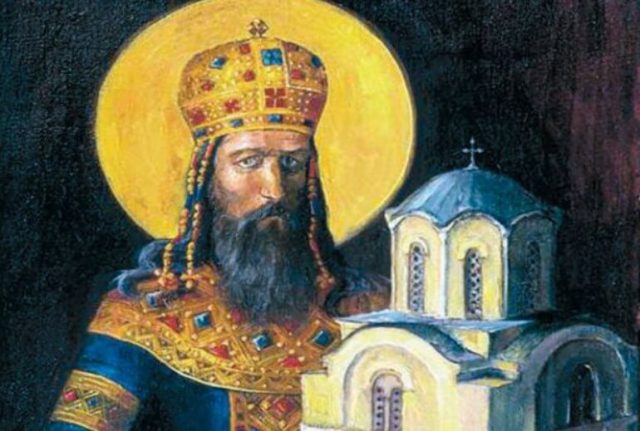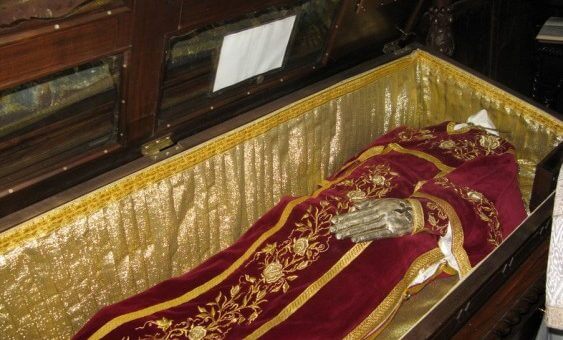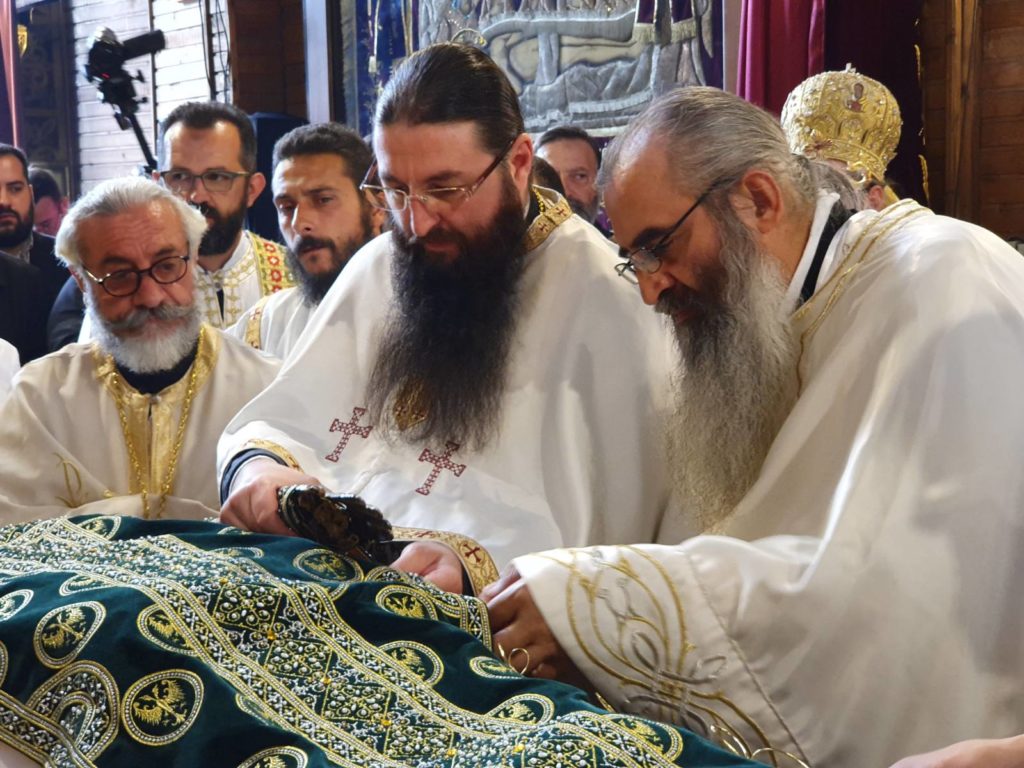Over the weekend, the Sofia Metropolis Cathedral, the heartbeat of Bulgaria’s capital, witnessed an extraordinary event.
Housing the revered relics of the Serbian king-saint for seven centuries, the cathedral marked the celebration of Holy King Stefan Milutin on October 30, designating it as the second temple holiday for the Church of Saint Sunday.
In adherence to tradition, on October 29, the day preceding the holiday, a bishop’s Holy Liturgy unfolded, accompanied by the dressing of the Holy King’s relics. With the blessings of His Holiness, Metropolitan of Sofia, and Bulgarian Patriarch Neophytes, the service was led by the esteemed Bishop Polykarp of Belogradčići, vicar of the Metropolitan of Sofia.

The ceremony gathered a distinguished assembly, including Archimandrite Vasilije, Protho-Viceroy of the Saint Sophia Metropolis, Archimandrite Yevtimie, Spiritual Superior of the Sofia Eparchy, and Hieromonk Mardarie, Abbot of the Poganovo Monastery from Serbia.
Over 40 priests from the Sofia Eparchy, along with Željko Jović, ambassador of the Republic of Serbia in Bulgaria, embassy staff, and official guests, attended the solemn service.
Notably, the relics of the Holy King exhibited a miraculous adjustment as they were adorned in new vestments, adding a touch of divine wonder to the occasion.

Saint King Stefan Uros II Milutin was the greatest benefactor of all Nemanjić: he built 42 churches in Serbia, and he also built shrines on Mount Athos, in Thessaloniki, Constantinople, Sofia and Jerusalem. He ruled from 1282 until his death on October 29, 1321.
He is celebrated on October 30. He died at the fortress in Nerodimlje, Kosovo, from where he was transferred to the Banjska monastery. In 1324, after people began to report miracles at his tomb, his tomb was opened and an incorrupt body was found. His wife Simonida, whom he took as a girl, became a nun immediately after that.
Until the Battle of Kosovo, his relics lay in Banjska, but then they were transferred to Trepča, and then, around 1460, to Sofia. They proved to be indestructible, and the smell never stopped spreading from them.
Not even the Turkish Pasha Ali-bey, who threw them to the ground on Lazarus Saturday, April 11, 1831, nor even the bombing of the church where they were located in 1926, managed to destroy them. His relics passed all these Golgothas intact.
In conclusion, the miraculous changing of the vestments of Saint King Milutin not only unveiled surreal scenes but also illuminated the profound intersection of faith, tradition, and divine intervention. These sacred moments serve as a testament to the enduring power of religious ceremonies, inviting reflection on the spiritual wonders embedded in our shared human experience.

